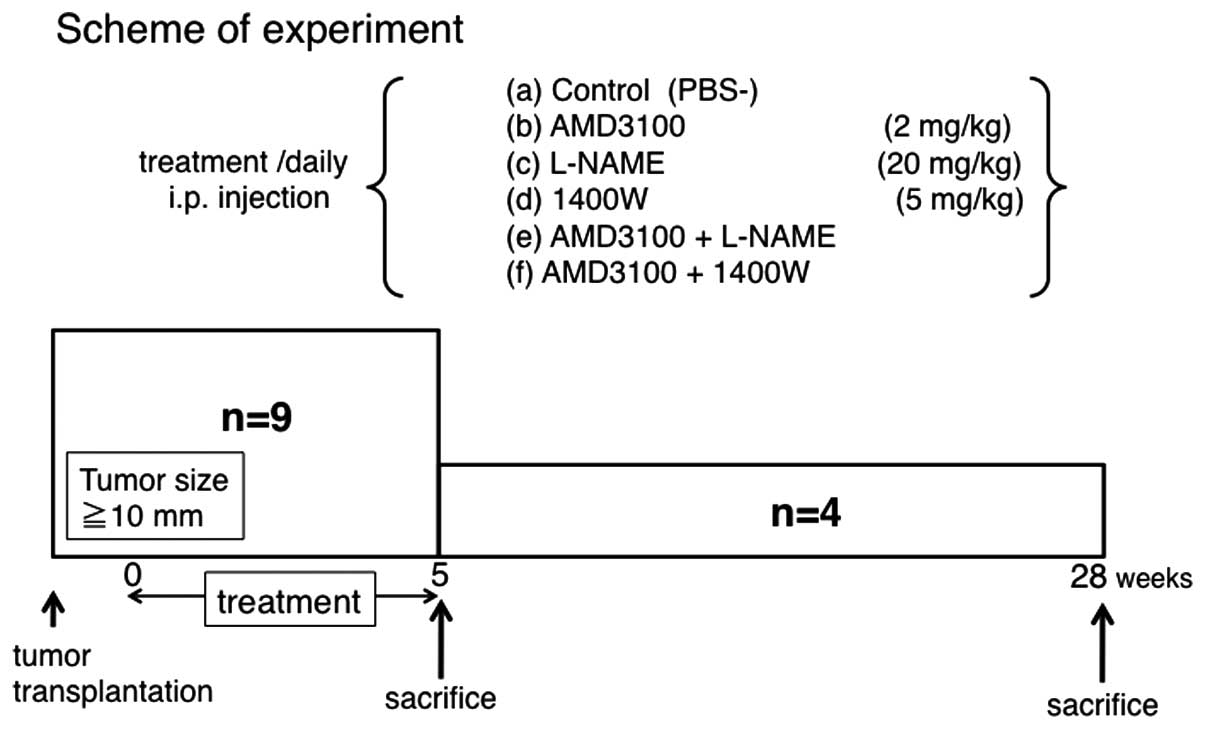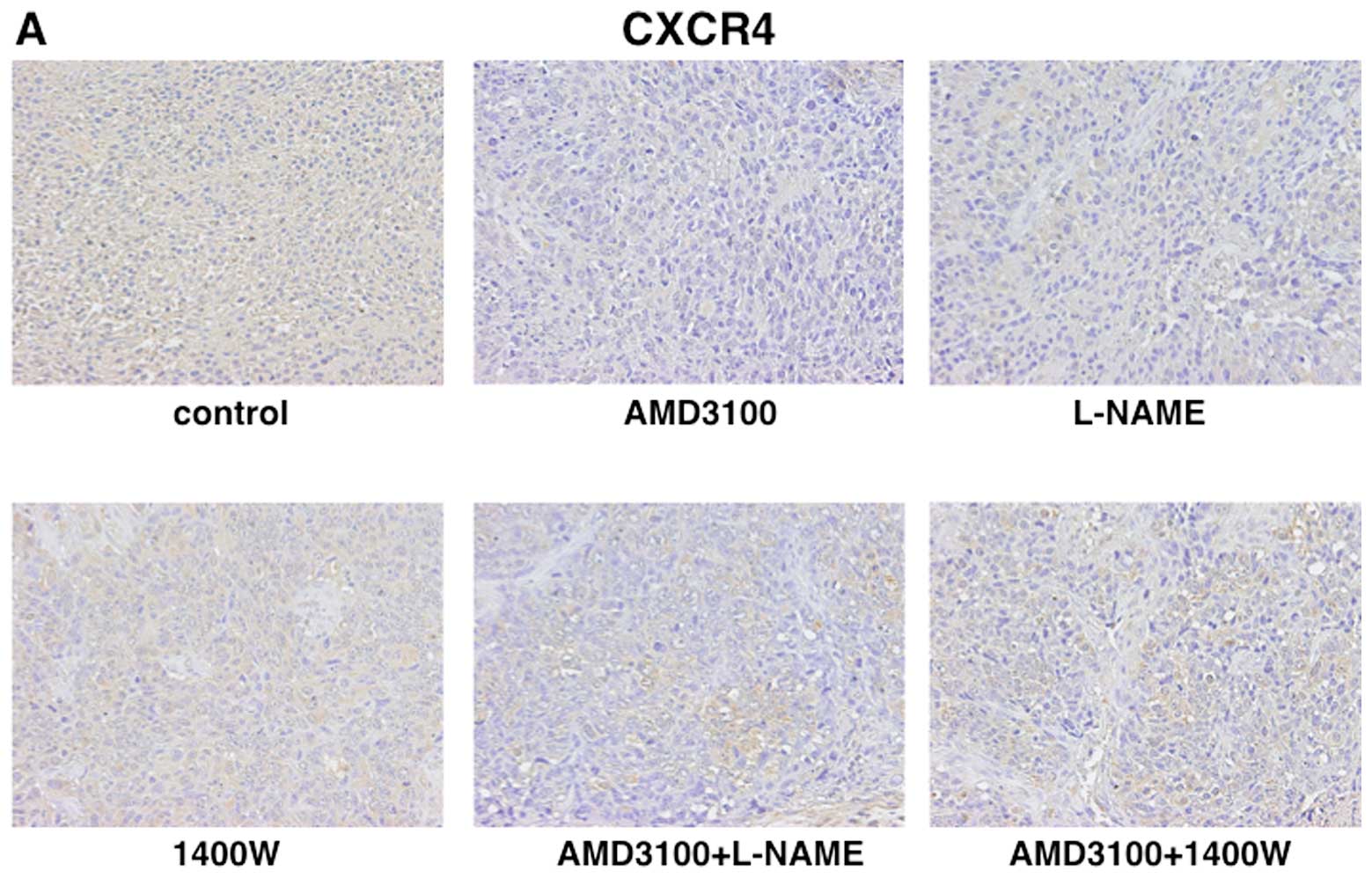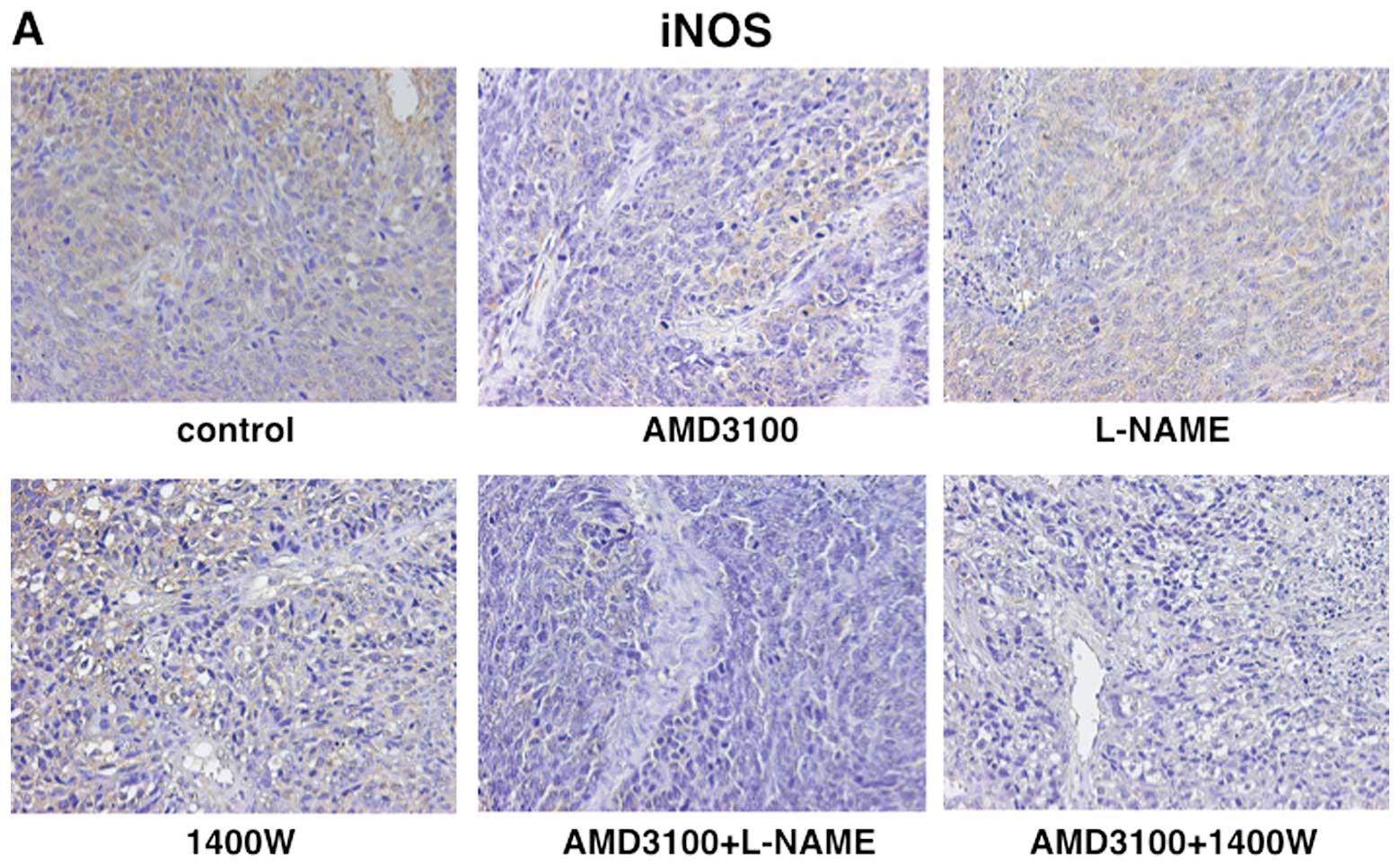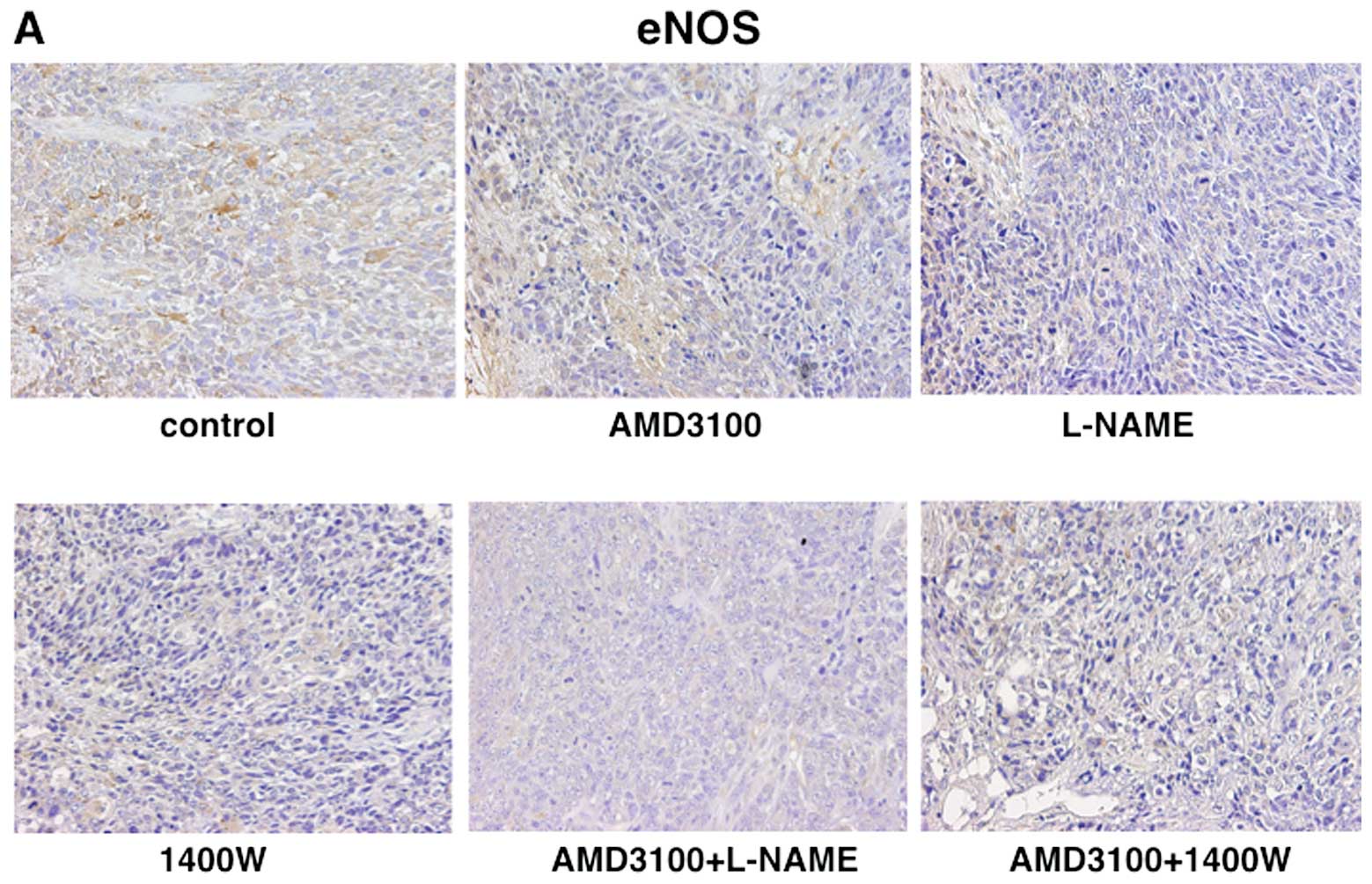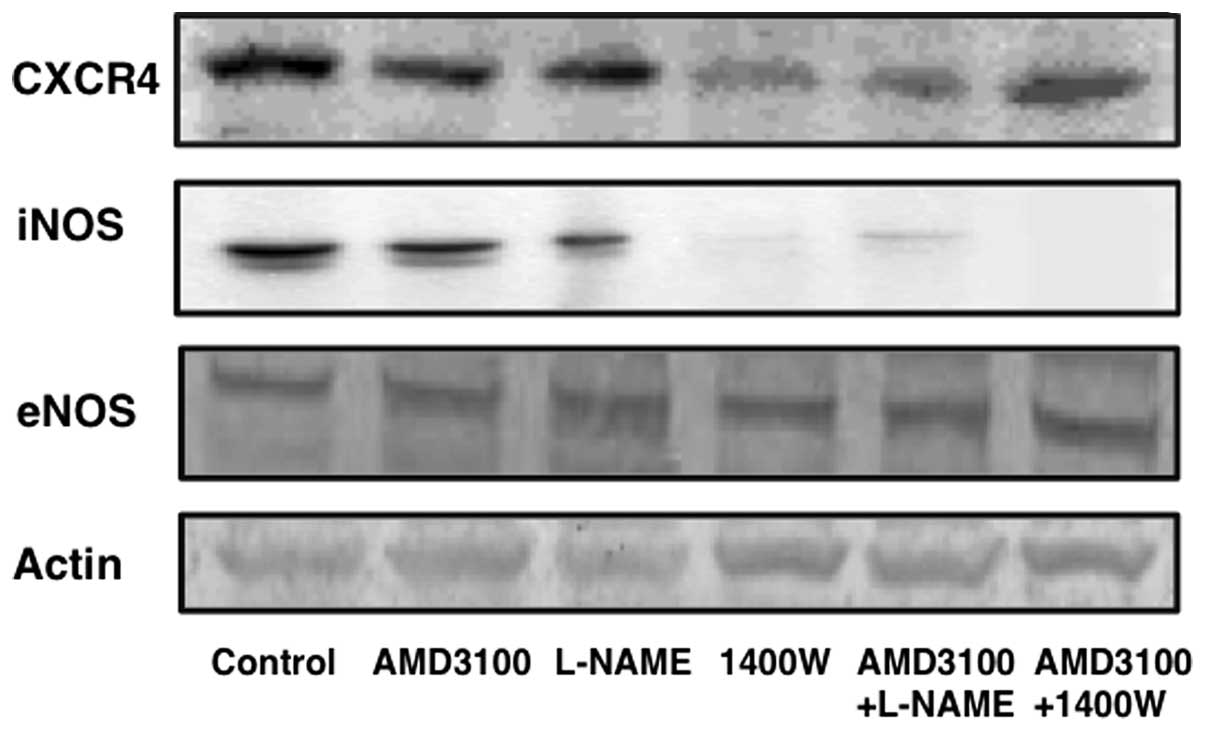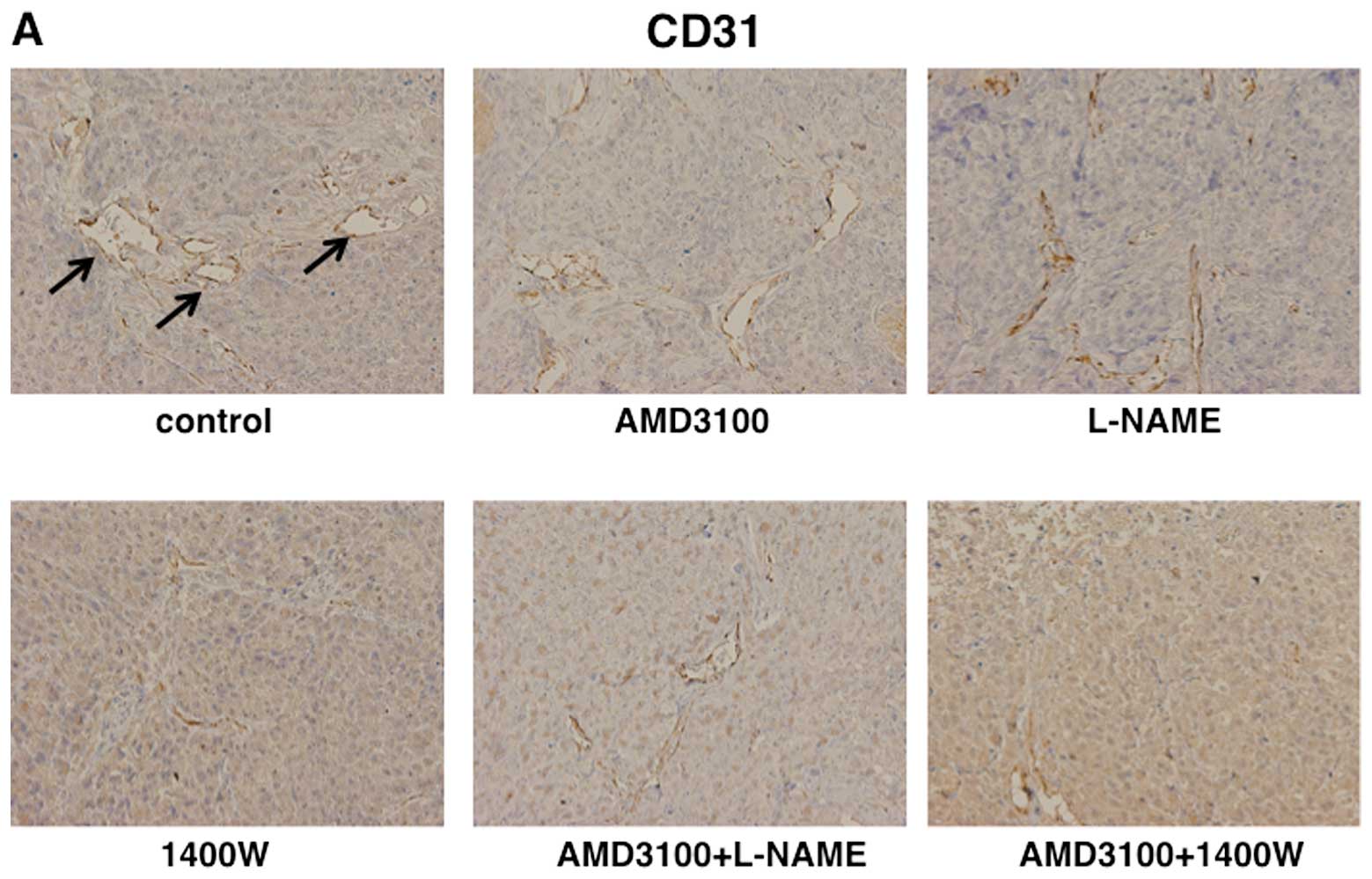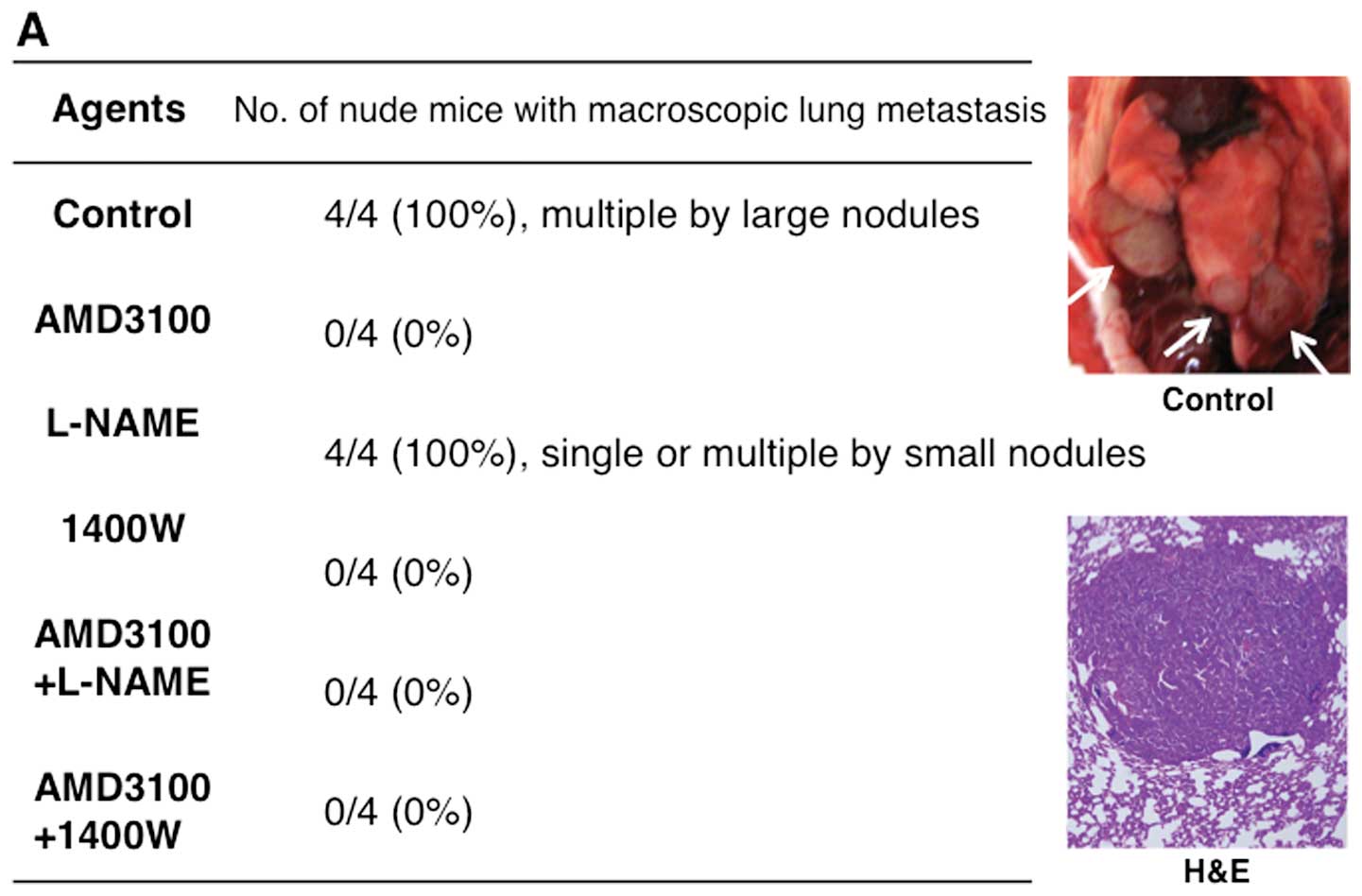|
1
|
de Kerviler E, Bely N, Laccourreye O,
Clement O, Halimi P and Frija G: The aryepiglottic fold as a rare
location of adenoid cystic carcinoma. Am J Neuroradiol.
16:1375–1377. 1995.PubMed/NCBI
|
|
2
|
Fordice J, Kershaw C, El-Naggar A and
Goepfert H: Adenoid cystic carcinoma of the head and neck.
Predictors of morbidity and mortality. Arch Otolaryngol Head Neck
Surg. 125:149–152. 1999. View Article : Google Scholar : PubMed/NCBI
|
|
3
|
Nathan C and Xie QW: Nitric oxide
synthases: roles, tolls and controls. Cell. 78:915–918. 1994.
View Article : Google Scholar : PubMed/NCBI
|
|
4
|
Fukumura D, Kashiwagi S and Jain RK: The
role of nitric oxide in tumor progression. Nat Rev Cancer.
6:521–534. 2006. View
Article : Google Scholar : PubMed/NCBI
|
|
5
|
Beckman JS, Beckman YW, Chen J, Marshall
PA and Freeman BA: Apparent hydroxyl radical production by
peroxynitrite: implications for endothelial injury from nitric and
superoxide. Proc Natl Acad Sci USA. 87:1620–1624. 1990. View Article : Google Scholar : PubMed/NCBI
|
|
6
|
Prueitt RL, Boersma BJ, Howe TM, et al:
Inflammation and IGF-1 activate the Akt pathway in breast cancer.
Int J Cancer. 120:796–805. 2007. View Article : Google Scholar : PubMed/NCBI
|
|
7
|
Ekmekcioglu S, Ellerhorst J, Prieto VG, et
al: Tumor iNOS predicts poor survival for stage III melanoma
patients. Int J Cancer. 119:861–866. 2006. View Article : Google Scholar : PubMed/NCBI
|
|
8
|
Ying L and Hofseth LJ: An emerging role
for endothelial nitric oxide synthase in chronic inflammation and
cancer. Cancer Res. 67:1407–1410. 2007. View Article : Google Scholar : PubMed/NCBI
|
|
9
|
Ohtsu N, Takaoka K, Segawa E, et al:
Antitumor effect of inhibitors of nitric oxide synthase or
cyclooxygenase-2 on human KB carcinoma cells overexpressing COX-2.
Oncol Rep. 24:31–36. 2010.PubMed/NCBI
|
|
10
|
Muller A, Homey B, Soto H, et al:
Involvement of chemokine receptors in breast cancer metastasis.
Nature. 410:50–56. 2001. View
Article : Google Scholar : PubMed/NCBI
|
|
11
|
Pablos JL, Amara A, Bouloc A, et al:
Stromal-cell derived factor is expressed by dendritic cells and
endothelium in human skin. Am J Pathol. 155:1577–1586. 1999.
View Article : Google Scholar : PubMed/NCBI
|
|
12
|
Aiuti A, Webb IJ, Bleul C, Springer T and
Gutierrez-Ramos JC: The chemokine SDF-1 is a chemoattractant for
human CD34+ hematopoietic progenitor cells and provides
a new mechanism to explain the mobilization of CD34+
progenitors to peripheral blood. J Exp Med. 185:111–120.
1997.PubMed/NCBI
|
|
13
|
Tashiro K, Tada H, Heilker R, Shirozu M,
Nakano T and Honjo T: Signal sequence trap: a cloning strategy for
secreted proteins and type I membrane proteins. Science.
261:600–603. 1999. View Article : Google Scholar : PubMed/NCBI
|
|
14
|
Bleul CC, Fuhlbrigge RC, Cassasnovas JM,
Aiuti A and Springer TA: A high efficacious lymphocyte
chemoattractant, stromal cell-derived factor-1α (SDF-1α). J Exp
Med. 184:1101–1109. 1996.
|
|
15
|
Campbell JJ, Hedrick J, Zlotnik A, Siani
MA, Thompson DA and Butcher EC: Chemokines and the arrest of
lymphocytes rolling under flow conditions. Science. 279:381–384.
1998. View Article : Google Scholar : PubMed/NCBI
|
|
16
|
Grabovsky V, Feigelson S, Chen C, et al:
Subsecond induction of α4 integrin clustering by immobilized
chemokines stimulates leukocyte tethering and rolling on
endothelial vascular cell adhesion molecule 1 under flow
conditions. J Exp Med. 192:495–506. 2000.
|
|
17
|
Wright N, Hidalgo A, Rodriguez-Frade JM,
et al: The chemokine stromal cell-derived factor-1α modulates α4β7
integrin-mediated lymphocytes adhesion to mucosal addressin cell
adhesion molecule-1 and fibronectin. J Immunol. 168:5268–5277.
2002.
|
|
18
|
Ganju RK, Brubaker SA, Meyer J, et al: The
α-chemokine, stromal cell-derived factor-1α, binds to the
transmembrane G-protein-coupled CXCR-4 receptor and activates
multiple signal transduction pathways. J Biol Chem.
273:23169–23175. 1998.
|
|
19
|
Homey B, Muller A and Zlotnik A:
Chemokines: agents for the immunotherapy of cancer? Nat Rev
Immunol. 2:175–184. 2002. View
Article : Google Scholar : PubMed/NCBI
|
|
20
|
Cardones AR, Murakami T and Hwang ST:
CXCR4 enhances adhesion of B16 tumor cells to endothelial cells in
vitro and in vivo via β(1) integrin. Cancer Res. 63:6751–6757.
2003.PubMed/NCBI
|
|
21
|
Murakami T, Maki W, Cardones AR, et al:
Expression of CXC chemokine receptor-4 enhances the pulmonary
metastatic potential of murine B16 melanoma cells. Cancer Res.
62:7328–7234. 2002.PubMed/NCBI
|
|
22
|
Robledo MM, Bartolome RA, Longo N, et al:
Expression of functional chemokine receptor CXCR3 and CXCR4 on
human melanona cells. J Biol Chem. 276:45098–45105. 2001.
View Article : Google Scholar : PubMed/NCBI
|
|
23
|
Zushi Y, Noguchi K, Hashitani S, et al:
Relations among expression of CXCR4, histological patterns and
metastatic potential in adenoid cystic carcinoma of head and neck.
Int J Oncol. 33:1133–1139. 2008.PubMed/NCBI
|
|
24
|
Hashitani S, Urade M, Zushi Y, Segawa E,
Okui S and Sakurai K: Establishment of nude mouse transplantable
model of a human adenoid cystic carcinoma of the oral floor showing
metastasis to the lymph node and lung. Oncol Rep. 17:67–72.
2007.PubMed/NCBI
|
|
25
|
Ovejera AA, Houchens DP and Baker AD:
Chemotherapy of human tumor xenografts in genetically athymic mice.
Ann Clin Lab Sci. 8:50–56. 1978.PubMed/NCBI
|
|
26
|
Hsu SM, Raine L and Franger H: Use of
avidin-biotin-peroxidase complex (ABC) in immunoperoxidase
techniques: a comparison between ABC and unlabeled antibody (PAP)
procedures. J Histochem Cytochem. 29:577–580. 1981. View Article : Google Scholar : PubMed/NCBI
|
|
27
|
Gavrieli Y, Sherman Y and Ben-Sasson SA:
Identification of programmed cell death in situ via specific
labeling of nuclear DNA fragmentation. J Cell Biol. 119:493–501.
1992. View Article : Google Scholar : PubMed/NCBI
|
|
28
|
Ekmekcioglu S, Tang C and Grimm EA: NO
news is not necessarily good news in cancer. Curr Cancer Drug
Targets. 5:103–115. 2005. View Article : Google Scholar
|
|
29
|
Wink DA, Ridnour LA, Hussain SP and Harris
CC: The reemergence of nitric oxide and cancer. Nitric Oxide.
19:65–67. 2008. View Article : Google Scholar : PubMed/NCBI
|
|
30
|
Li G, Yang T and Yan J: Cyclooxygenase-2
increased the angiogenic and metastatic potential of tumor cells.
Biochem Biophys Res Commun. 299:886–890. 2002. View Article : Google Scholar : PubMed/NCBI
|
|
31
|
Engels K, Knauer SK, Loibl S, et al: NO
signaling confers cytoprotectivity through the survivin network in
ovarian carcinomas. Cancer Res. 68:5159–5166. 2008. View Article : Google Scholar : PubMed/NCBI
|
|
32
|
Fetz V, Bier C, Habtemichael N, et al:
Inducible NO synthase confers chemoresistance in head and neck
cancer by modulating survivin. Int J Cancer. 124:2033–2041. 2009.
View Article : Google Scholar : PubMed/NCBI
|
|
33
|
Roy HK, Wali RK, Kim Y, et al: Inducible
nitric oxide synthase (iNOS) mediates the early increase of blood
supply (EIBS) in colon carcinogenesis. FEBS Lett. 581:3857–3862.
2007. View Article : Google Scholar : PubMed/NCBI
|
|
34
|
Singh RP and Agarwal R: Inducible nitric
oxide synthase-vascular endothelial growth factor axis: a potential
target to inhibit tumor angiogenesis by dietary agents. Curr Cancer
Drug Targets. 7:475–483. 2007. View Article : Google Scholar : PubMed/NCBI
|
|
35
|
Nguyen DX, Bos PD and Massague J:
Metastasis: from dissemination to organ-specific colonization. Nat
Rev Cancer. 9:274–284. 2009. View
Article : Google Scholar : PubMed/NCBI
|
|
36
|
Joyce JA and Pollard JW:
Microenvironmental regulation of metastasis. Nat Rev Cancer.
9:239–252. 2009. View
Article : Google Scholar : PubMed/NCBI
|
|
37
|
Yasuoka H, Kodama R, Hirokawa M, et al:
CXCR4 expression in papillary thyroid carcinoma: induction by
nitric oxide and correlation with lymph node metastasis. BMC
Cancer. 8:2742008. View Article : Google Scholar : PubMed/NCBI
|
|
38
|
Yasuoka H, Tsujimoto M, Yoshidome K, et
al: Cytoplasmic CXCR4 expression in breast cancer: induction by
nitric oxide and correlation with lymph node metastasis and poor
prognosis. BMC Cancer. 8:3402008. View Article : Google Scholar : PubMed/NCBI
|



